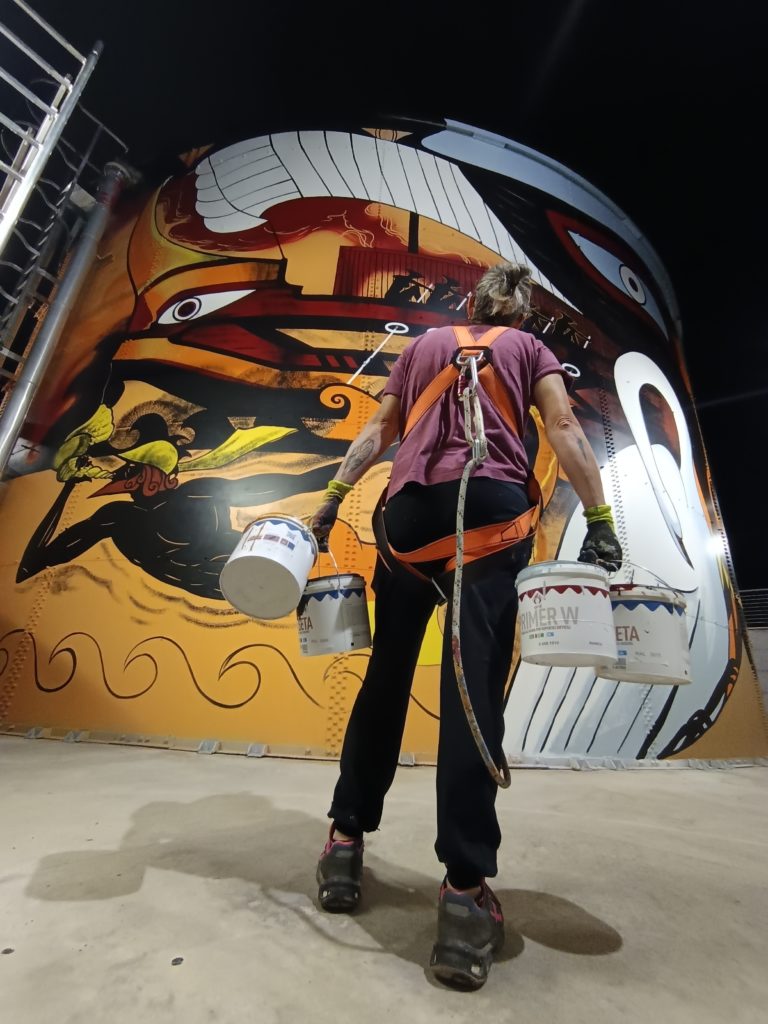
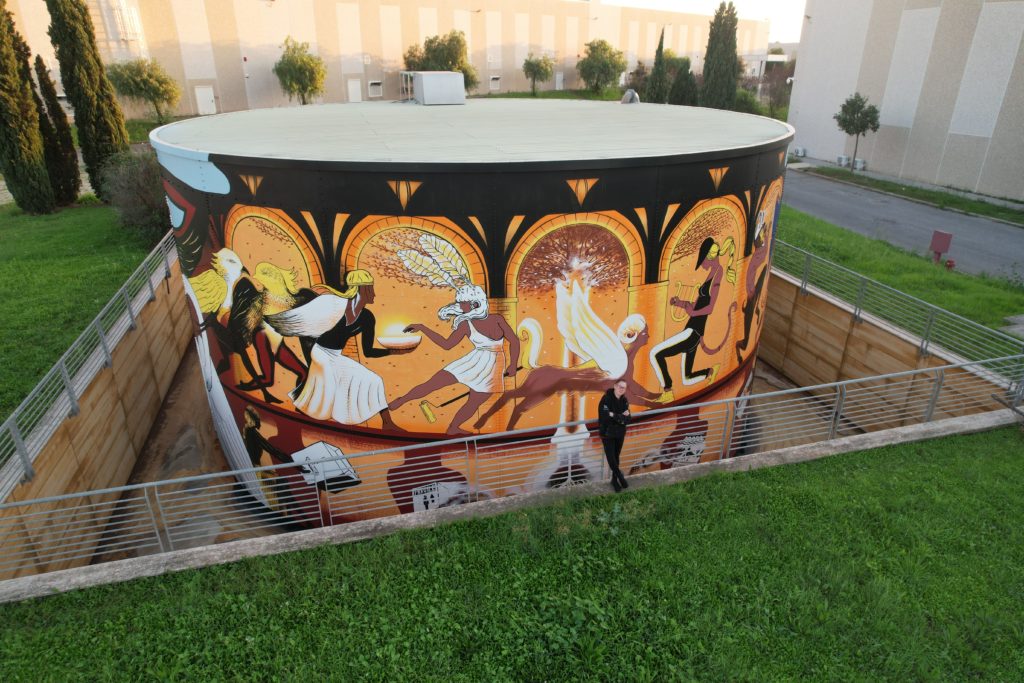
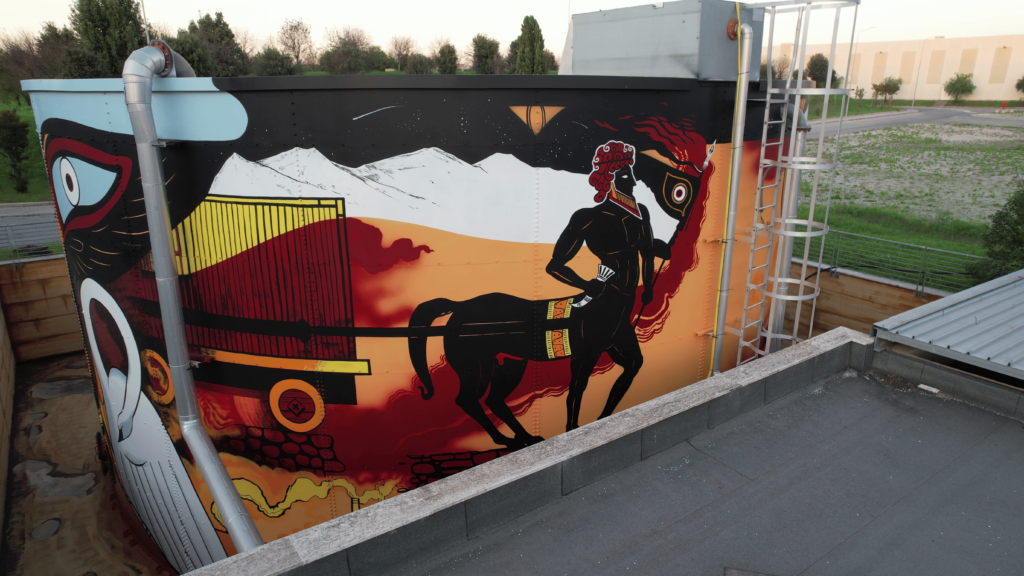
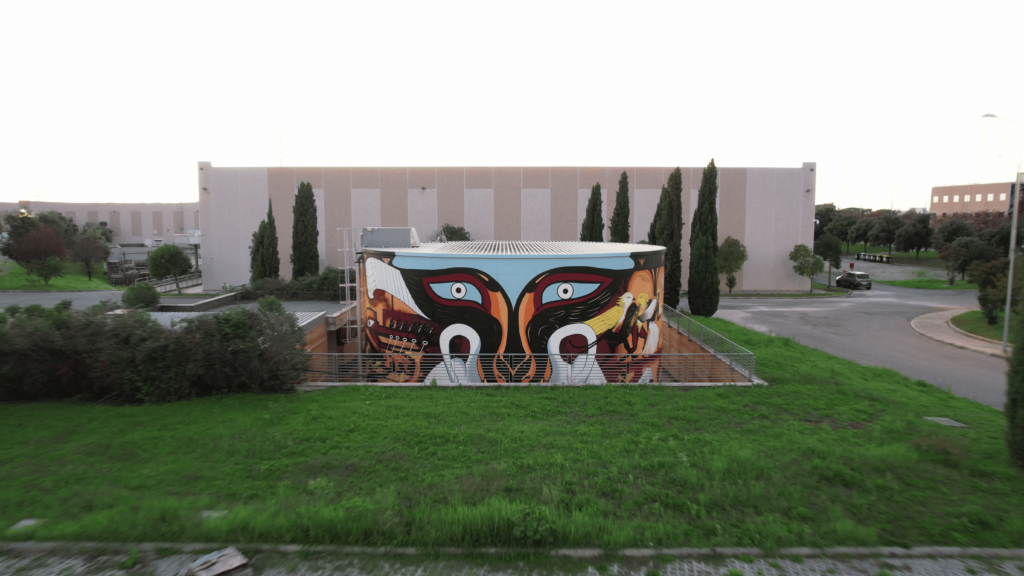
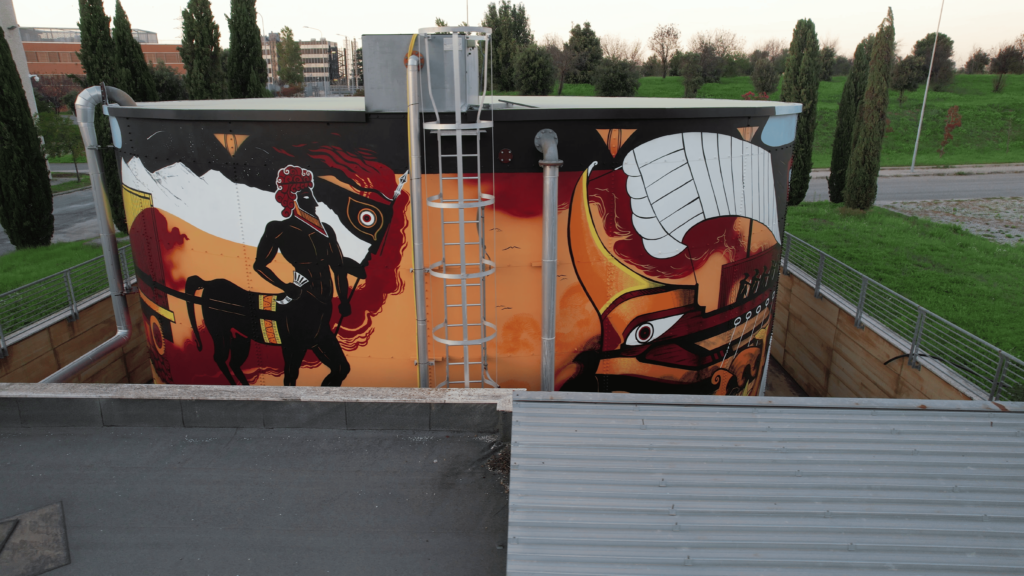
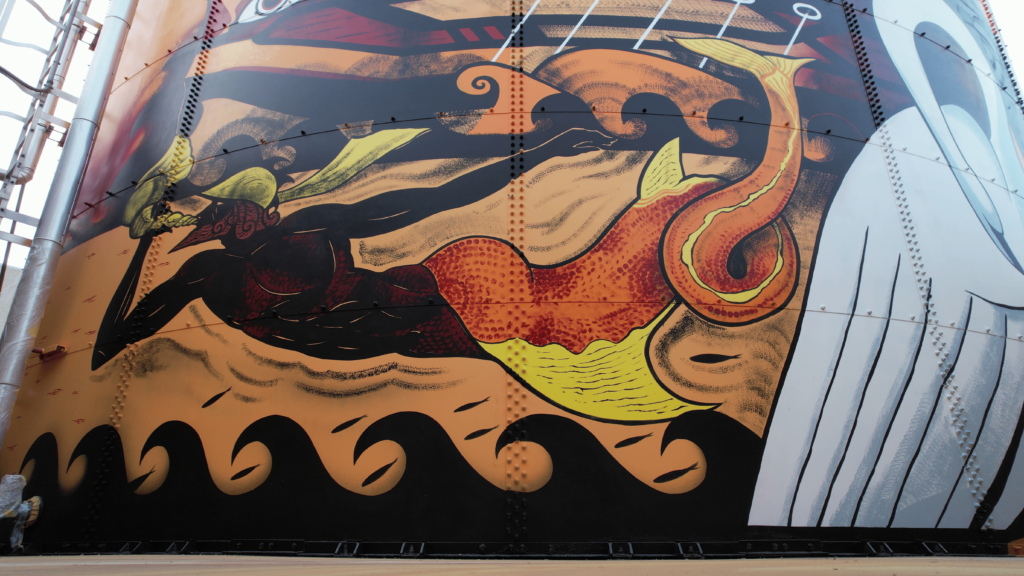
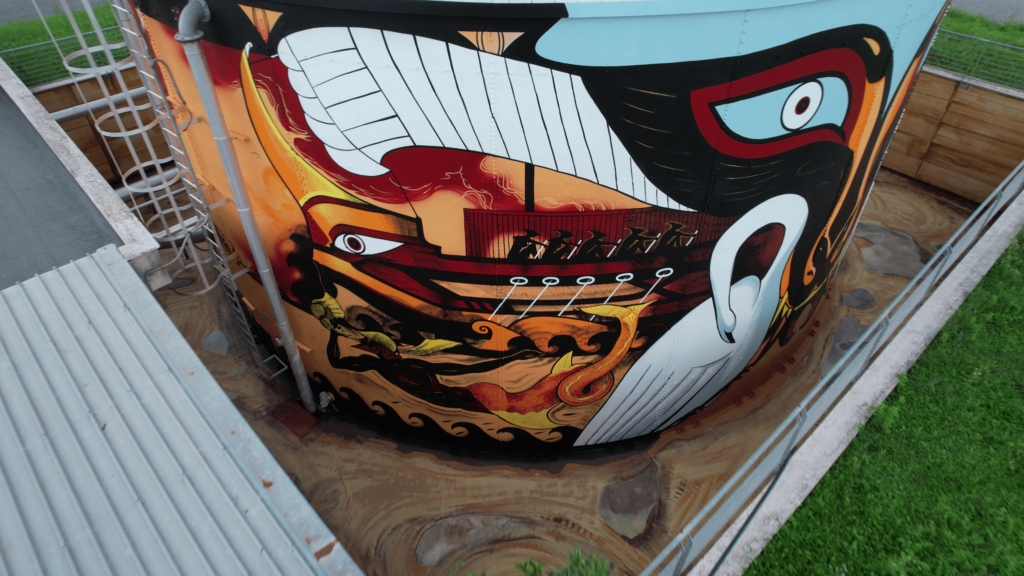
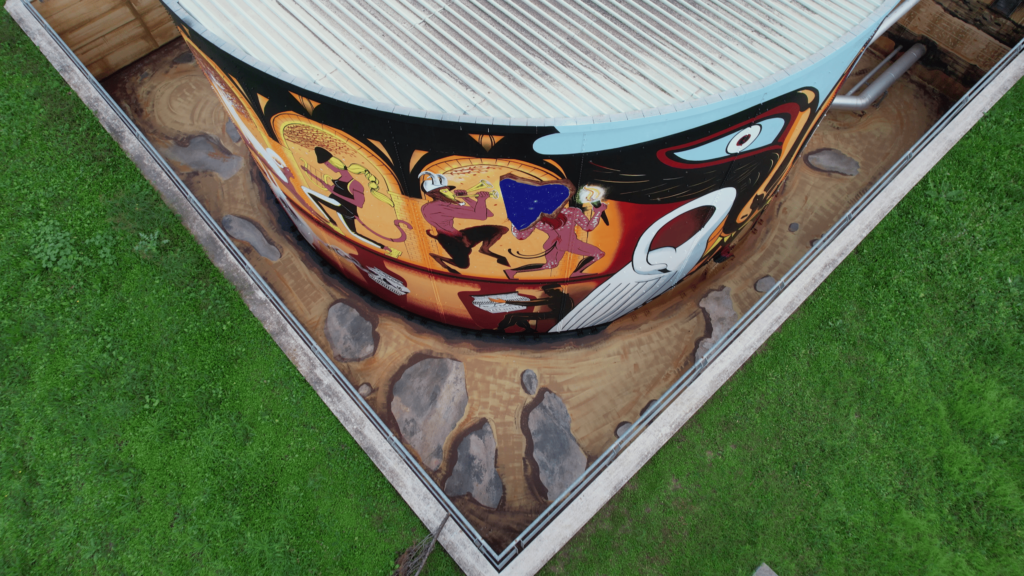
Here at Prologis Park La Rustica, we present to you the work of Ale Senso — one of the most influential street artists in Italy, and a visionary talent known around the world for her deeply symbolic and imaginative approach. Ale Senso began her artistic journey in the early 1990s, immersing herself in the world of urban art while studying conceptual, performative, and visual arts at the Academy. After graduating in 2001, she lived and worked across Milan, Berlin, and now Rome, exploring a wide range of urban environments. In 2021, she created Quiete — a monumental mural stretching over 2,200 square meters on a multisport court.
One of the largest works of its kind, it became a finalist in the prestigious Arte Laguna Prize. And in 2024, her recognition reached the highest level: during his International Women’s Day speech, President Sergio Mattarella named Ale Senso among the five most important street artists in Italy. And now, in front of you — not just a fire water tank… but an amphora. Or rather — a Meta-Anfora. This work is born from two ideas.
The first: to transform an industrial object into an epic vessel, inspired by the form and elegance of ancient Greek pottery. An ancient shape, telling a modern story — the story of logistics as a force of exchange and creativity, reaching back to the earliest days of civilization.
The second idea: to create a bridge between reality and imagination. Not far from this tank lies an archaeological site — where real ancient amphorae were discovered. This proximity supports the illusion: placing the Meta-Anfora in a context that feels entirely possible — conceptually, physically, historically. It’s from this creative collision — between fact, fiction, and form — that the name of the work emerges: Meta-Anfora.
The tank sits in a sunken concrete pit, and the artist uses this feature to create the illusion of an archaeological dig — as if we’ve stumbled upon an ancient artifact, buried and rediscovered. A real myth, in a real place. Let’s take a closer look. On the front upper surface, a lively festive procession unfolds. Dancing figures shift and morph — animals, humans, masked beings, gods and demigods, even characters from our time — all gathered beneath a graceful arcade.
They exchange gifts. They look at one another. They recognize each other. At the end of the scene, a modern Prometheus walks away, holding two lit torches. He is the key to the missing fragment — one torch remains here, the other will reappear elsewhere. In the center stands a chimera — a mythical guardian, linking the upper and lower realms. Behind it, the Tree of Life rises and spreads — its branches blooming, stretching across the scene. Its roots plunge into a vessel of light — a symbol of ongoing exchange: of goods, of knowledge, of culture. A portal — always open — between past, present, and future.
Now, turn to the back of the tank, and the story shifts. Here, the focus is on movement, on shared effort, on the synergy required to transport goods by land and sea. At the center of it all: the port. In the upper right, a centaur pulls a container by cart. On the left, a boat — driven by wind and rowed by half-human, half-fish figures — carries another container across the waves. Below, a triton blows a conch, announcing the ship’s arrival at an industrial harbor — which we glimpse rising on the left. And then — a surprise. After completing the work, Ale Senso removed a small part of it.
She repainted it in the studio, turning it into a standalone fragment — like a real archaeological artifact. That piece now lives in the offices of Prologis. If you look closely, through the gap left behind, you’ll glimpse a starry sky. What does the Meta-Anfora truly hold? Perhaps not just memory or material — but an entire universe. A parallel world, quiet and hidden — resting inside, or maybe beyond, the world of logistics. A space where art, time, and reality blend and shimmer, like a secret passage between what we know… and what we’ve yet to imagine.